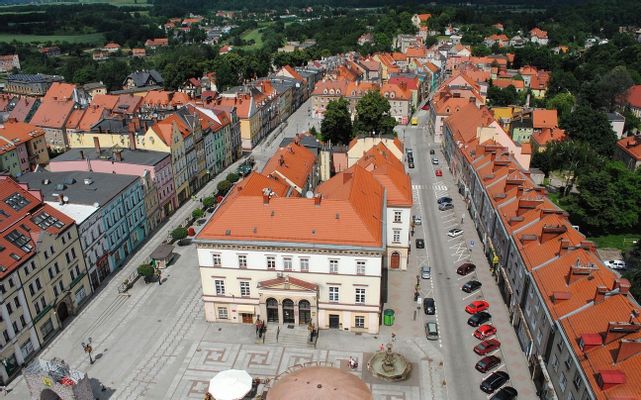This Lower Silesian city has a Gothic castle from 1138 and one of Europe's largest mining museums. The medieval old town square is lined with baroque townhouses.
Legnica, a city of nearly 100,000 residents in southwestern Poland, welcomes you with its 13th-century Piast Castle, Renaissance stone carvings on merchant houses, and a baroque Old Town Hall. As you walk through the streets, you'll pass the Gothic Cathedral of Saints Peter and Paul, cross the Kaczawa River into the 19th-century City Park, and discover remnants of Soviet military buildings from the city's time as a Cold War base.
Exploring the Old Town
The Market Square contains the baroque Old Town Hall at its center, surrounded by historic buildings from different periods. Look for the 16th-century Herring Houses with their narrow facades and stop at the Under the Quail Basket House to examine its Renaissance stone carvings. You can watch performances at the Helena Modrzejewska Theatre, which puts on regular shows throughout the year.
Medieval Fortifications and the Piast Castle
The 13th-century Piast Castle covers over 3 hectares. Two medieval gates remain standing - the Chojnów and Głogów Gates - which were once part of the city's defensive walls. Within the castle complex, you'll find the Cathedral of Saints Peter and Paul, which combines Gothic elements with 16th-century Renaissance additions.
Parks and Urban Green Spaces
The 50-hectare City Park, dating from the 19th century, contains centuries-old trees and seasonal flower gardens. Walk through the Tarninow district to see early 1900s garden squares and tree-lined streets. Along the Kaczawa River, you can use cycling paths and walking trails that link different green spaces across the city.
Soviet Military Legacy
Between 1945 and 1993, Legnica was the headquarters for the Northern Group of Soviet Army troops. The Fourth Air Force command operated here, along with a military airfield outside the city. You can still see Soviet-era buildings and former military facilities, particularly in the southern neighborhoods.
Getting Around
Buses 2, 3, and 5 connect the main train station to the Old Town and castle area, running every 15-20 minutes during the day. For weekend nights, use buses N1 and N2. Trains run hourly from Wrocław between 6:00 and 22:00, taking about 60 minutes. To reach the city center by car, use one of two exits from the A4 motorway along the city's southern edge.



















